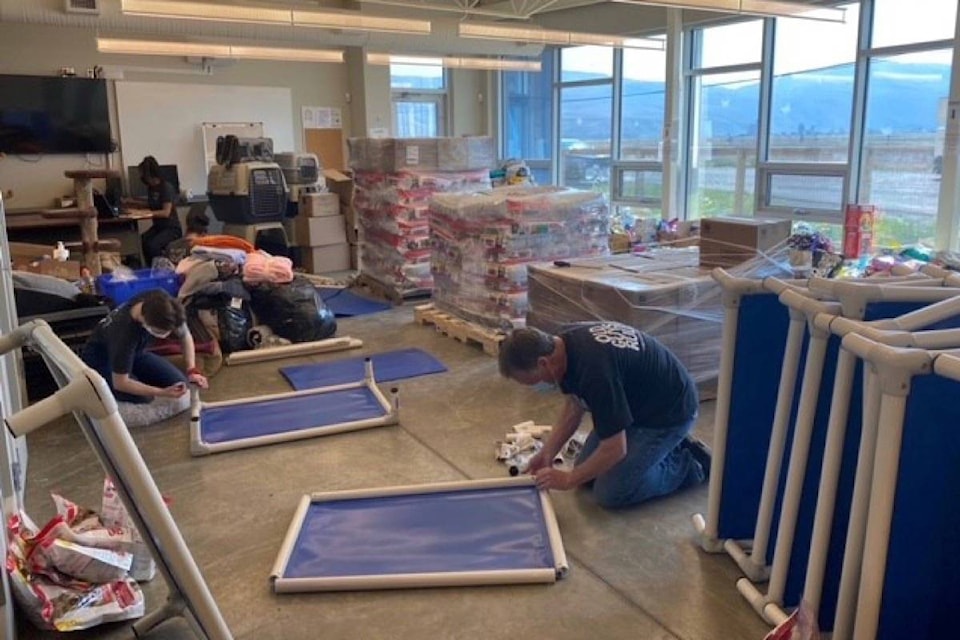The BC SPCA has received permission to go into the village of Lytton on Thursday, July 8 to rescue any pets and farm animals that are still in the area. The organization has been receiving requests from Lytton residents who had to flee the town without pets or livestock following the devastating fire on June 30 that destroyed 90 per cent of the community.
There is only a short time to get in and perform the rescues, and Lorie Chortyk, general manager of communications for the BC SPCA, says that officers and transport vehicles are standing by to enter the village as soon as they are able to.
“We have been documenting all requests from animal owners since the fires broke out, and these requests are still coming in through our Call Centre and ESS,” says Chortyk. “It is our goal to get every animal out, but we are working with a one-day window, which is challenging.”
Any Lytton residents needing assistance for their animals are asked to contact the BC SPCA call centre at 1-855-622-7722 no later than 6 p.m. today (July 7).
BC SPCA special constables will transport the animals to the edge of the evacuation lines, where they will be met by SPCA staff who will shuttle the animals to Kamloops. There the animals will either be returned to their owners or admitted for SPCA emergency boarding, if the owner requires temporary shelter for their pet.
In addition to their animal rescue efforts behind the evacuation lines, the BC SPCA has set up a temporary Animal Evacuation Centre at 350 Dene Drive in Kamloops (north shore) for pets that have been displaced by the wildfires and need emergency boarding.
“We have been taking in animals for the past week at our BC SPCA shelter in Kamloops,” says Chortyk. “We transferred the homeless animals in our Kamloops location to nearby SPCA shelters in Vernon and Shuswap to make room for animals displaced by the fires. The Animal Evacuation Centre is the next step to accommodate the increasing number of animals needing help.”
The temporary centre is located at High Country Cold Storage, a 5,500-square-foot air-conditioned warehouse, and will house incoming dogs. Cats and small animals admitted for emergency boarding will be transferred by the SPCA to the Kamloops shelter for care. The centre is being staffed by BC SPCA personnel from Kamloops and others who have been deployed from around the province, as well as local SPCA volunteers.
Chortyk says they have received offers of help from members of the public, which are appreciated, but says they are using SPCA volunteers at the centre, as they have received animal care and management training. However, she adds that anyone who is interested in helping by becoming a volunteer foster home can find out more information at http://spca.bc.ca/ways-to-help.
People willing to help the emergency response for pets displaced by the wildfires can also make donations at http://spca.bc.ca/emergency or drop off supplies (leashes, collars, food bowls, toys for dogs, cats, and small animals, cat litter, and cleaning supplies) to the Kamloops SPCA at 2816 Tranquille Road. For COVID safety reasons, please leave items outside the front door.
Anyone needing emergency boarding for their pet during the wildfires is asked to please contact the BC SPCA Call Centre at 1-855-622-7722 for more information, or visit the animal help desk at the Kamloops ESS Centre. Those who have already registered with ESS can bring their animals directly to the Animal Evacuation Centre at 350 Dene Drive.
editorial@accjournal.ca
Like us on Facebook and follow us on Twitter
